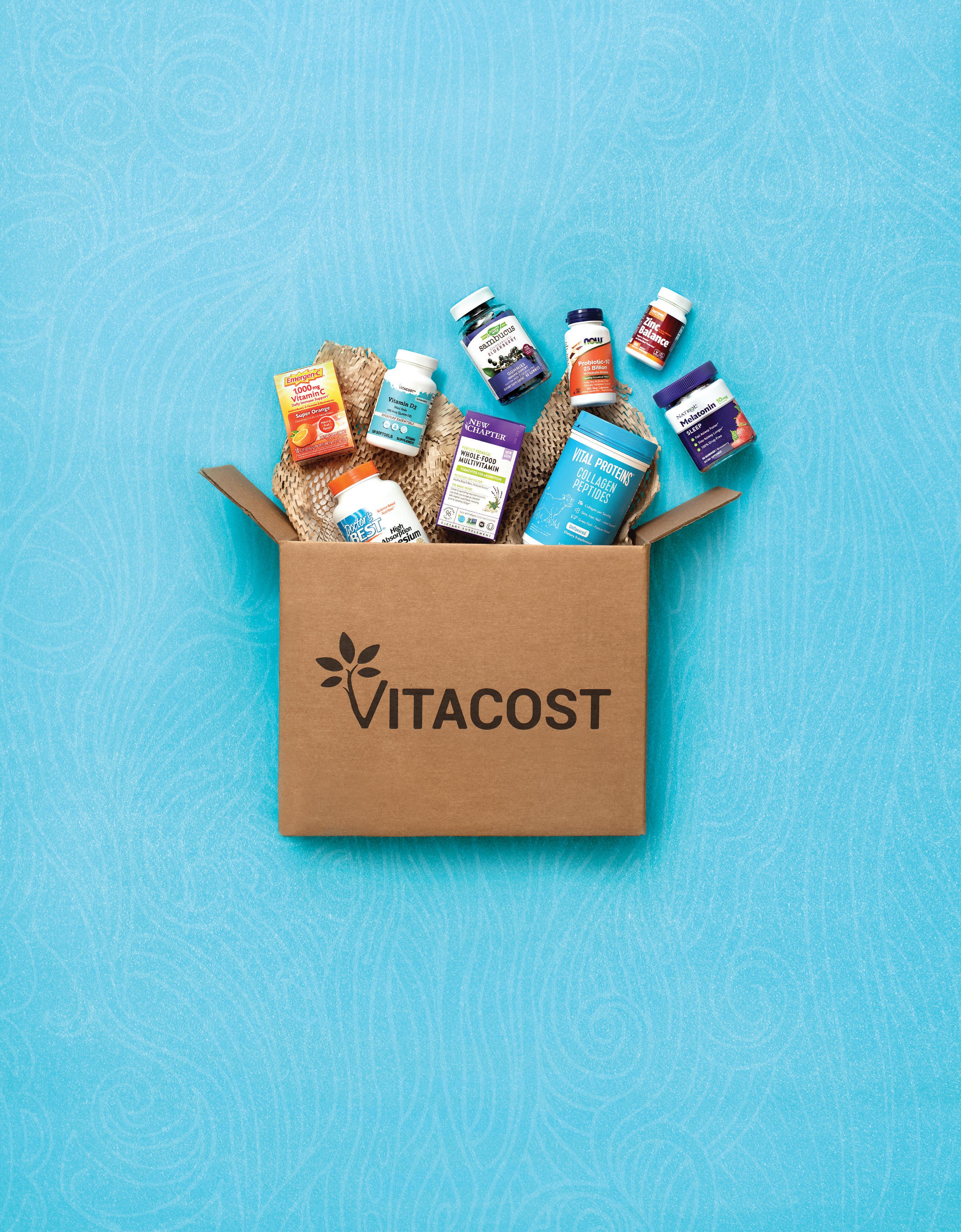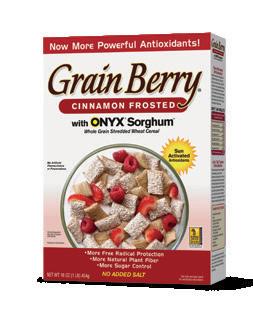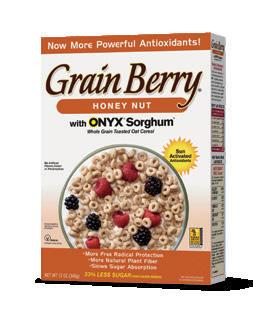ITALIAN PORtOBELLO MUSHROOM BURGER WITH ARTICHOKE TAPENADE




ITALIAN PORtOBELLO MUSHROOM BURGER WITH ARTICHOKE TAPENADE



Here at Live Naturally, we love summertime and the exciting opportunities it brings. There’s just something about stepping into a warm sunny day that revitalises and coaxes a carefree smile out of us—and that’s something we can all really use after the last few years.

According to the World Health Organization (WHO), the prevalence of anxiety and depression rose 25 percent across the globe in the first year of the COVID-19 pandemic alone, with stress being cited as the primary cause. Social isolation and loneliness, fear, loss, and financial worries were listed as some of the primary reasons for stress.
Stress plays a significant role in our physical health, too. In fact, stress affects every system in our body, with strong links to high blood pressure and cardiovascular disease, diabetes, skin conditions, asthma, arthritis, obesity, fertility … the list goes on.
The good news is that even though stress gets a bad rap, in small, manageable doses it can be a good thing. Researchers at the University of California, Berkeley, found that moderate, short-lived stress improved performance, alertness, and even boosted memory in animal studies. In an interview with Greater Good Magazine, Daniela Kaufer, an associate professor at UC Berkeley and one of the study’s authors, says that everyone responds to stress differently, but people who feel resilient and confident that they can manage stress are more likely to have a healthy response (as opposed to becoming overwhelmed) than people who think of stress as “bad.” She also explains that when we have control over a situation, stress is much less likely to be harmful.
In this issue of Live Naturally, we encourage you to pay attention to what’s causing you stress and reflect on how you can manage or rethink it. To help you get started, we interviewed Dr. Doni Wilson (pp. 5), author of Master Your Stress, Reset Your Health, who suggests that by understanding our unique stress type, we’re able to live comfortably with our stress and use it to empower us.
If you have kids, the back-to-school season can be an especially stressful time. So, we’ve included some easy and healthy recipes (yes, they exist!) perfectly suited for picky eaters and busy mornings. Our hope is that the tips and recipes in these pages will take some of the pressure off mealprep so that healthy eating can become a stressfree habit rather than a chore.
As we emerge from our COVID cocoons, let’s consider our new routines. Are you filling your cart and your belly with feel-good foods? Do you spend enough quality time with others, or outside? When was the last time you exercised? Although often overlooked, these are just a few everyday ways you can take control of your stress, and your mental health.
Wishing you a stress-free summer and back-to-school season, –the Live Naturally Team






















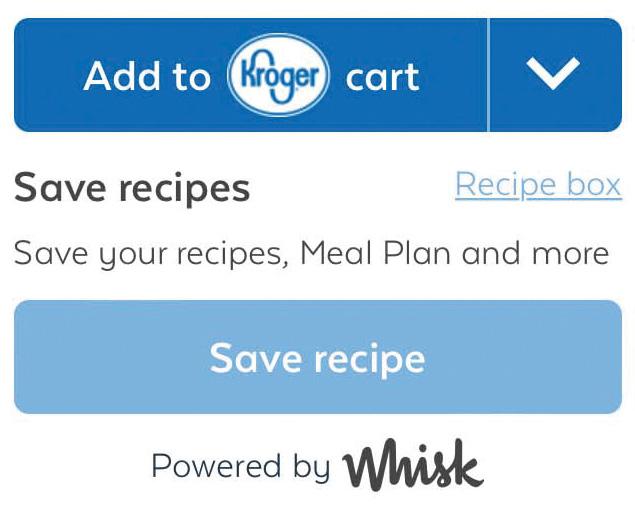

CEO & Group Publisher
Ryan Benn
Vice President, Publishing & Operations
Nina Wagner
CUSTOM PUBLISHING
Vice President, Custom Publishing Brendan Harrington
Publisher, Live Naturally Deborah Juris
EDITORIAL
Group Content Director, Editor-in-Chief Tracy Peternell
Senior Editor Sandi Gauvin
Editor, CNHR Bruce W. Cole
Editors • Melissa Curman , Erin Jackson, Laura Newton
Digital Editor • Colleen Grant
DESIGN
Group Creative Director & Photographer • Scott Yavis
Senior Graphic Designers • Lindsay Burke, Iva Zima
Graphic Designer • Devanshee Mavani
PRODUCTION
Director of Operations
• Devin Steinberg
Administrative Assistant, Publishing • Faye Boxall
SALES
Vice President, Sales • Ellen Wheeler ext 619
Retail Account Executive, Canada • Charles Ho
Sales Coordinator • Sarah Fuson

Account Executive (EAST) • Bernadette Higgins 561.362.3955
Retail Account Executive, USA Rebecca Randolph 603.525.3553
EDUCATION & ADMINISTRATION
Vice President, Education & Administration
Executive Assistant Hannah Dewar
Office Administrator Maria Valle
• Jane Griffiths
Manager, alive Academy Julia Wagner ext 637
Manager, Academy Admissions • Jan Clay ext 623
FINANCE
Director of Finance Conroy Ing
Senior Accountant • Maira Guzman
Accounts Receivable Specialist • Jacqui Harquail
PUBLISHED BY
CONTACT INFORMATION

Alive Publishing Group Inc. 100-12751 Vulcan Way, Richmond, BC V6V 3C8
Phone: 604-295-9333 Toll Free: 1-800-663-6580. Six issues published per year.
ADVERTISING POLICY
alive accepts advertising based upon space availability and consistency with its mission to promote a natural health and wellness lifestyle. alive is not responsible for the content of advertisements, the products offered, or the viewpoints expressed therein.
EDITORIAL NOTE
The information provided in this magazine is for educational and informational purposes only. It should not be used as a substitute for the advice of a qualified and licensed practitioner or health-care provider. The opinions expressed here are not necessarily those of Alive Publishing Group Inc. or its affiliates or parent company. Different views may appear in future articles or publications. Articles in Live Naturally and Optimum Wellness are copyrighted and must not be reprinted, duplicated, or transmitted without permission.
In her new book, Dr. Doni Wilson shares how to manage and harness stress by figuring out your stress type.
 BY REBECCA HEATON
BY REBECCA HEATON
Stress and anxiety are part of our daily lives. We experience them in different ways, from working long hours and sleepless nights, to busy family schedules, even suffering quietly with headaches, tension, and gut issues. In her latest book, Master Your Stress, Reset Your Health (BenBella, 2022), Dr. Doni Wilson, ND, shares that there are ways to handle and live with stress and harness it to empower us by finding and treating our unique stress type. We caught up with her to learn more.

What inspired you to write this book? There were several reasons. I dealt with stress starting at a young age when my family moved around and I was changing schools all of the time. My dad ran a chain of pharmacies, and my mother was a special education teacher. Lucky for me they both recognized this stress and we worked to address it with healthy eating and lifestyle. This inspired me to study nutrition and natural medicine. I was also interested in women’s health and became a certified midwife. I researched how stress affects women in labor and found that they need a certain amount of stress for labor to progress—they need cortisol and adrenaline to push their baby out. I looked into applying the same principal of women in labor to all people dealing with stress and their cortisol and adrenaline levels. I also personally struggled with migraines and began measuring my cortisol and adrenaline levels to treat myself.
What are the five stress types and why is it helpful to know your type?
I studied 127 adults and their adrenal distress patterns caused by stress and identified the five most common stress types as: The Stress Magnet, The Night Owl, Sluggish and Stressed, Blah and Blue, and Tired and Wired. Each of these has common cortisol and
adrenaline levels and, once I measure those, I can treat symptoms from a naturopathic perspective with natural herbs. For example, ashwagandha lowers cortisol levels. High adrenaline levels can be treated with magnesium. Most practitioners rarely measure cortisol, but it’s an important hormone that is naturally higher in the morning, then lower as the day progresses. It’s also important to measure adrenaline levels to pinpoint treatment.
Mastering stress is about having optimal cortisol and adrenaline levels. We need cortisol for digestion, our immune system, and neurotransmitters, which are messengers in the nervous system. Adrenaline is a neurotransmitter that responds to stressful, exciting, or threatening situations and makes the heart beat faster, increases blood flow to the brain and muscles, and stimulates the body to make sugar to use for fuel.
Once you know your stress type, what are the next steps?
Along with natural herbs, the foundation to become more resilient and manage stress is CARE: C = clean eating, A = adequate sleep, R = recovery, and E = exercise. Changing your diet, sleep, stress levels, and exercise requires some mindfulness and doing a daily check-in with yourself. Take a break when you need it. Take some deep breaths. Don’t try to overdo it. Go gentle and small steps will pay off.
The food as medicine concept has been gaining in popularity over the past few years, and for good reason. At Kroger Health, food as medicine means a dedicated, educated, and personalized approach to eating and enjoying food so we can live healthier lives and prevent illness before it starts.
Kroger Health’s Food as Medicine platform was recently supported by evidence from the Supermarket and Web-Based Intervention Targeting Nutrition (SuperWIN) study, conducted by Kroger Health in conjunction with the University of Cincinnati. SuperWIN aimed at increasing diet quality and decreasing cardiovascular risk by promoting a hearthealthy diet, aka the DASH diet (Dietary Approach to Stop Hypertension), through nutrition counseling provided by a Kroger Health registered dietitian.
The study found in-aisle teaching at a Kroger grocery store with a Kroger Health registered dietitian significantly increased adherence to a heart-healthy diet. Adherence was further improved when the registered dietitian also provided education on how to use online shopping technologies including OptUP, Kroger Health’s industry-leading nutrition rating system to simplify and track healthier shopping.
Food is much more than the source of energy that fuels our bodies. It is a source of joy, a pillar of togetherness, and a foundation to our memories. Here are three ways you can incorporate food as medicine into your daily life.

Sarah Limbert, RDN, LD, is your go-to dietitian for quick, delicious, and convenient meals. She really knows her way around the grocery store, and can provide insight, inspiration, and a positive perspective on meal preparation.
Personalize your joy.
The food you eat should be personalized to your own individual tastes. Enjoy foods packed with vitamins and minerals by tailoring the taste profile. Add herbs and spices to nutrient-dense foods. Sprinkle a dash of cinnamon in yogurt or rosemary and thyme on roasted vegetables. These simple additions will not only leave your taste buds happy, but they are also packed with nutrients. No spice combination is off limits!
Eat more meals with loved ones and friends. Food brings us together. Whether you are having dinner together as a family or enjoying lunch with your coworkers, eating meals with others provides us with opportunities to connect. The ability to bond with others over a meal can fuel your body and your mind. Plan a picnic dinner outside with your family or invite some friends over for a barbeque.
Make fresh memories. Make fruits and vegetables a staple when celebrating special moments in life. Why? This helps to build positive associations with these nourishing foods. It can be as simple as the fun fruit bowl made from a watermelon for a birthday celebration or a veggie tray arranged to look like the American flag for the fourth of July. These moments make food fun and enjoyable, creating traditions that may last a lifetime.
OptUP is Kroger Health’s Food as Medicine platform that highlights the importance of selecting foods that fit your individual needs. The OptUP app takes all the guesswork (and label reading) out of determining how healthy a food is. Using a nutrition rating system, OptUP assigns food scores so you know immediately how healthy a specific food item is. Download it today!

1947 •••
Solgar launches its fi rst product, Naturvite – a multivitamin that used vegetables instead of inorganic fi llers.
Launch of allergen-free formulas; strive to eliminate preservatives, artifi cial fl avors and colors.
with chelated materials.





Solgar
Vegicaps®, the fi rst two piece vegetarian capsule.
First
certifi ed supplement line.
Solgar is one of the fi rst in the industry to use a natural, water-based layer for all coated-tablets.
SOLGAR: CELEBRATING 75 YEARS AS THE GOLD STANDARD IN VITAMINS.


Always pursuing the science. Never just following the crowd. Solgar: crafting and innovating quality supplements since 1947.
Today, we continue to live up to our strict quality standards with rigorous testing and highest quality materials.Our commitment remains strong to you and your health.

Natural powders that give you a boost of this all-important protein.
BY REBECCA HEATONCollagen: It’s the second most abundant substance in the human body (water is first). Research suggests that it supports healthy skin, hair, and nails. It keeps our joints strong. And, particularly in our golden years, it is essential for bone health. However, as we age, our collagen levels naturally decline—starting as early as age 25! But there’s a way to help replenish those levels by adding collagen powder to your daily diet routine. Here are some of our favorites. »
Collagen Peptides
Collagen Peptides
Collagen Peptides


This collagen is formulated with grass-fed, pastureraised bovine hide, plus fermented eggshell membrane collagen—from sustainably raised chickens— to increase absorption.
Hydrolyzed: Yes
2 scoops (20 g): 70 calories; 18 g protein; 20 g collagen
GF DF SF NF NG KF PF
Ancient Nutrition composts all accessible waste material from the manufacturing process of its fermented eggshell membrane for use in growing organic food crops, some of which become ingredients in the brand’s products.
What is hydrolyzed collagen?
It’s collagen that’s been broken down into more dissolvable amino acids so that it’s easier for the body to digest and absorb.
Original Collagen Peptides
Orgain’s collagen peptides are derived from bovine collagen, sourced from grass-fed, pasture-raised cattle in New Zealand.

Hydrolyzed: Yes
1 scoop (10 g): 35 calories; 9 g protein; 10 g collagen
Orgain also offers a Keto Collagen powder in vanilla and chocolate flavors.
Made from grass-fed, pasture-raised bovine hide, this collagen also contains 1.5 billion CFUs of probiotics for gut health and digestion.
Hydrolyzed: Yes
1 scoop (20 g): 70 calories; 18 g protein; 20 g collagen; 10 mg Lactobacillus plantarum (probiotic)
Garden of Life is the first supplement company to be Certified Carbonfree (carbonfund.org).
This collagen powder, made from bovine hide, also contains hyaluronic acid, which, according to research, increases skin hydration and elasticity, and vitamin C to boost natural collagen production.
Hydrolyzed: Yes
2 scoops (20 g): 70 calories; 18 g protein; 20 g collagen; 90 mg vitamin C; 80 mg hyaluronic acid
GF DF 30 PF K
Vital Proteins also offers collagen in gummies, waters, and bars.

MANUFACTURER COUPON EXPIRES 11/01/2022





We all want healthy meals for our children. But with our busy lives, achieving this is sometimes easier said than done. School lunches don’t have to be complicated, though. Simple and healthy—with a bit of fun mixed in— are the way to go. Here are some tips on how to do it.

• Prepare and organize school lunches for the entire week on Sunday.
• Ask your children to help out—let them choose favorite fruits, veggies, and sandwich ingredients. Assign them the role of assistant chef.
• Pick fun foods—if kids can squirt it, dip it, or sip it, they will love it.
• Use the rainbow approach—make meals healthy by including veggies of differing colors.
• Remember fresh is best—try to limit prepackaged foods and include plenty of raw veggies in lunches.
Keep in mind that a child’s metabolism is high when he or she is growing. Debby Demory-Luce, RD, LD, a nutritionist at the Baylor College of Medicine in Houston, Texas, recommends that a lunch should provide one-third of the daily intake of vitamins, minerals, and calories for kids. Make a goal to include:
• a source of protein: meat, eggs, beans, legumes, tofu, or seeds
• a source of calcium: milk (substitute fortified soy, almond, or rice milk), figs, cheese, yogurt, or tahini
• vegetables and fruit, especially dark green veggies like broccoli, spinach, romaine lettuce, and orange veggies like carrots and sweet potatoes
• two servings of grains: pasta, rice, bread, oatmeal, or couscous (brown or whole grain versions are best)
• a treat
Treats are a big thing in kids’ lunches. They’re the hot ticket item that often gets traded. The good news is treats don’t have to be unhealthy. Dried fruit, popcorn, whole grain crackers, granola, and homemade muffins or cookies are all good choices.
• Whole wheat chicken wrap with hummus, spinach, and red bell peppers
• Carton of milk with a fun straw
• Sliced peaches
• Stringless snap peas
• Homemade trail mix (multigrain cereal, raisins, almonds, sunflower seeds, pretzel sticks, and chocolate chips)
• Cubed cooked chicken skewer with grape tomatoes and cucumber wedges
• Salad dressing as a dip
• Cheddar cheese
• Whole wheat crackers
• Fruit salad of diced banana and apple in low-fat vanilla yogurt
• Slice of pumpkin loaf (with jam or honey on the side)
• Whole wheat salmon sandwich with sliced cucumber and alfalfa sprouts
• Baby carrots and celery with low-fat salad dressing or hummus
• Low-fat yogurt
• Strawberries
• Oatmeal cookie
• Whole wheat pita pizza with chicken, diced veggies (mushrooms, tomato, broccoli, and peppers—arranged to make a face) and cheese
• Unsweetened applesauce
• Granola (to blend with applesauce if they want)
• Low-fat, low-sodium cottage cheese
• Whole wheat quesadilla (cut into wedges) with extra-lean ground beef, corn, tomato, peppers, and cheese

• Salsa and sour cream
• Red pepper slices
• Grapes
• Cheese cubes
• Air-popped popcorn sprinkled with Parmesan cheese
These are just a few healthy school lunch choices. Take time to discover more options on your own using these as a starting point. Happy packing!

SERVES 8
1 lb carrots (about 4 medium)
2 Tbsp + 1 tsp extra-virgin olive oil or camelina oil
1 ½ cups cooked or canned (drained and rinsed) chickpeas
3 Tbsp tahini
Juice of ½ lemon
1 garlic clove, minced
2 Tbsp honey
2 tsp orange zest
½ tsp ground cumin
8 whole grain or gluten-free tortilla wraps
1 ½ lb cooked boneless, skinless organic chicken thighs, sliced
2 red bell peppers, thinly sliced
8 cups baby spinach or other tender salad greens
1. Preheat oven to 400º F. Peel and chop carrots into 1-inch pieces. Toss carrots with 1 tsp oil and place on baking sheet. Roast until tender and beginning to darken, about 20 minutes. Remove from oven and let cool.
2. Place roasted carrots, chickpeas, tahini, lemon juice, 2 Tbsp oil, garlic, honey, orange zest, and cumin in food processor container and blend until smooth.
3. To prepare wraps, spread carrot hummus over surface of wraps and top with an equal amount of chicken, red pepper, and spinach. Roll tightly and slice in half on the bias. If needed, insert toothpicks to hold wraps in place.

PER SERVING: 411 CAL; 27 G PROTEIN; 14 G FAT; 27 G CARB (10 G SUGARS); 488 MG SODIUM; 7 G FIBER
Matthew Kadey is a dietitian, nutrition writer, and recipe developer. He is also the author of Rocket Fuel (VeloPress, 2016) and Muffin Tin Chef (Ulysses Press, 2012).
NON-GMO POPCORN

This natural, whole grain popcorn that started as a homegrown business and sold at local street fairs and neighborhood events in Minnesota is now available around the world—thanks to being discovered for sale outside of the Minnesota Vikings stadium on a game day. Made with non-GMO corn, all flavors are free of gluten and preservatives. Speaking of flavors, they range from Sea Salt, made simply with popcorn, sea salt, and sunflower oil, on up to the decadent Dark Chocolate Flavored Drizzled Sea Salt Kettle Corn.
FLAVORS Sea Salt, Sweet & Salty, Cheddar Cheese, White Cheddar, Sweet & Salty Kettle Corn, Real Butter, Salted Maple, Caramel & Cheddar, Dark Chocolate Flavored Drizzled Sea Salt Kettle Corn
ZERO ADDED SUGAR

All taste with no waste, RIND Snacks’ collection of functional fruit snacks from all-natural, US-grown produce utilizes the whole fruit—rind and all. Full of flavor, the skin-on snacks maximize vitamins, fiber, and antioxidants by keeping the peel from fruits including kiwis, apples, oranges, melons, and coconuts. Using the whole fruit also helps reduce unnecessary food scraps that get thrown away. So, the snacks are better for you and the planet. All snacks are non-GMO, gluten free, and paleo friendly, with no sulfites, added sugar, or preservatives. FLAVORS Coconut Crisps; Straw-Peary; Coco-Melon; Orchard; Tropical; and Kiwi, Apple, and Orange Chips

5 G OF PROTEIN IN 2 COOKIES
Who says a cookie can’t be healthy—or even semi-healthy? Known for their nutritious pancake mixes laden with ingredients like whole grains and protein to fuel an active lifestyle, Kodiak Cakes has unveiled its newest product: Thin and Crispy Cookies. Crafted with 100 percent whole grains and a wheat protein isolate—five grams of it in two cookies— plus other yummy ingredients, these tasty cookies come in a variety of flavors to “chews” from. Thanks to the whole grains, they are also a good source of vitamins and antioxidants.
FLAVORS Chocolate Chip, Chocolate Chip Walnut, Oatmeal Raisin

Cathy Katin-Grazzini is on a mission to take people on a plant-based journey.
 BY REBECCA HEATON
BY REBECCA HEATON
Aplant-based chef educated at the T. Colin Campbell Center for Nutrition Studies at Cornell University and the Rouxbe Culinary School, Cathy Katin-Grazzini is passionate about teaching others the powerful health and environmental impacts from eating a plant-based, nutrient-rich diet that is low in fat. In her new book, Love the Foods That Love You Back (Rizzoli, 2022), she shares a wealth of plantbased recipes for everyone from the food curious, to home cooks who want to expand their repertoires, to anyone who wants to optimize their weight and health. We caught up with her to learn more.
Chronic systemic inflammation. “When we eat processed foods that are high in fat, protein, and refined carbs, it kicks our immune system into a perpetual slow burn and our cells are chronically inflamed. This is when diseases take root,” says Katin-Grazzini. “A plantbased diet is low-fat and as unrefined as one can go. And these foods cool down the inflammatory processes.”
Oxidative stress. “Free radicals occur in cell metabolism, it’s normal. But some dietary factors, like what we eat and how we prepare it, can cause free radicals to go into overdrive, which is oxidative stress. And this can manifest into diseases. Plants have antioxidants—64 times more than animal products—a natural defense that puts a halt to oxidative stress and creates balance in the body,” she explains.
Gut health. “We need good microbes in our digestive tract because a healthy microbiome is vital for our metabolism, immune system, mental wellness, and the ability to fight off diseases. It really depends on what we eat. Only plants contain gut-friendly microbes rich in fiber,” she says.
“Over 90 percent of Americans are deficient in fiber, which is the main sustenance for beneficial gut microbes. Fiber helps flush out substances in our blood stream that could raise risk for disease. It reduces bio acids produced by the liver and also helps reduce cortisol, the stress hormone. On average, Americans consume 10 to 15 grams per day; the National Academy of Medicine’s minimum daily requirement is 25 grams for women, 38 for men. If you’re eating plant-based, you will naturally consume double that,” says Katin-Grazzini.
Dried legumes. Katin-Grazzini loves incorporating a variety of beans and lentils into her diet. Not only are they economical, she says, “I cook them up in big batches and use them in soups, stews, and chilis. Any extra, I freeze.”
Whole grains. “I have bags and bags of whole grains in my pantry, not just red and white wheat. Oats, buckwheat, rye, millet, teff, a lot of them are gluten free and loaded with nutritional benefits. I mill these and make flours for bread. They are also wonderful as risottos, in breakfast porridges, or baked into cookies.”
Dried fruits. “I use them instead of sugar. I make pastes out of them, heating or microwaving with water, then blending. Then you can use the pastes to sweeten anything: jam, sweet sauces, dressings, and pastries.”
“If you’re new to plants, start with familiar foods,” recommends Katin-Grazzini.
“Try and cook with less oil, salt, and refined sugars, all of which mask the flavor of foods. If you start eating cleaner, you start tasting the nuances that the foods have (instead of tasting salt and oil). Start with pastas, chili, nachos, and soups ... You can tweak it and do a plant-based version of these. Instead of meat, add beans, mushrooms, or tofu for substance.”
TURN THE PAGE FOR THREE DELICIOUS RECIPES FROM CATHY KATIN-GRAZZINI’S COOKBOOK
SERVES 3 TO 4
1 medium-large fennel bulb with fronds
3 to 4 French radishes
2 small yellow and 2 small orange carrots
1 medium organic Fuji apple
Zest and juice of 1 organic lime
¼ cup green peas, fresh, if available, or frozen and defrosted
¼ cup flavorful Mediterranean or Middle Eastern green olives, not pitted
½ cup Dried Apricot Paste (below)
2 Tbsp finely chopped unsalted pistachios
1 scallion, slivered on the bias
1. Using a mandoline on a fine setting or a sharp chef’s knife, slice the fennel bulb, radishes, and carrots uniformly thin. Core and slice the apple and toss the apple slices with the lime juice to prevent browning. Just before plating, drain off and reserve the lime juice to use in the dressing.

2. Attractively plate the fennel, carrots, radishes, and apples to showcase each one’s color and texture, and distribute the peas and olives on top.
3. To make the dressing, whisk the reserved lime juice with a sufficient amount of the apricot paste to flavor it to your taste. If it is too dense to pour, thin it further with water, a teaspoon at a time, until it is pourable. Drizzle over the plated salads or serve the dressing on the side.
4. Garnish each serving with a few fennel fronds and some lime zest. Sprinkle the chopped pistachios and slivered scallions on top.
PER SERVING: 382 CAL; 8 G PROTEIN; 3 G FAT; 91 G CARB (69 G SUGARS); 141 MG SODIUM; 16 G FIBER

DRIED FRUIT PASTE
1 CUP
INGREDIENTS
1½ cups dried fruit, pits, if any, removed Water
DIRECTIONS
1. In a saucepan, cover the dried fruit with water. Bring to simmer over medium heat and cook for 5 minutes. Alternatively, cover with water in a microwave-safe bowl and heat for 2 minutes on high power. Let cool in the soaking liquid.
2. Transfer the rehydrated fruit to a high-speed blender. Add as little or much of the soaking water as needed: less for a dense paste or more for a softer, looser texture. Blend until very smooth. Fruit paste will keep in the refrigerator for up to 2 weeks, and in the freezer for 3 months.
HERE ARE SOME OF OUR FAVORITE RECIPES FROM LOVE THE FOODS THAT LOVE YOU BACK
MAKES 48 (1-INCH) CUBES
1 cup oat flour
1 cup cooked black beans
1 cup seeded and puréed baked kabocha squash (see below)
2 cups dense Date Paste (Dried Fruit Paste opposite page)
½ cup plus 2 Tbsp organic cacao powder
1 scraped vanilla bean or 1 Tbsp vanilla extract
½ tsp aged tamari or aka (red) miso, or to taste
Pinch freshly ground chipotle chili (optional)
Decorating sugar crystals and/or freeze-dried berries
DIRECTIONS
1. Preheat the oven to 375°F.
2. In a food processor with the metal blade, purée the flour, beans, squash, date paste, cacao, vanilla, tamari, and chili (if using) until smooth. The batter will be thick and
MAKES ABOUT 1 CUP
1 head roasted garlic (below)
1½ packed cups tender herbs
1⁄3 cup nutritional yeast
1 tsp shiro miso or to taste
Freshly ground white or black pepper, to taste
½ tsp lemon juice (optional)
Up to 1 cup of water
1. In a blender, combine the roasted garlic, herbs, nutritional yeast, miso, pepper, and lemon juice (if using) with ½ cup of the water. Process until very smooth, adding a few more tablespoons of water to achieve a dense, spreadable sauce. To make a pourable dressing, thin with up to ½ cup additional water.
Taste and correct seasonings as you like.
Remove
CREAMY GREEN SAUCE: Use ½ of a ripe avocado in place of all or some of the water.
ITALIAN SALSA VERDE: Use white wine vinegar instead of the optional lemon juice, and stir in 1/3 cup whole wheat breadcrumbs and 2 Tbsp capers after blending.
PESTO: Use basil, increase the nutritional yeast to ½ cup, and add ¼ cup pine nuts.

PER 1 CUP: 148 CAL; 14 G PROTEIN; 2 G FAT; 20 G CARB (1 G SUGARS); 280 MG SODIUM; 7 G FIBER
EXCERPTED FROM LOVE THE FOODS THAT LOVE YOU BACK © 2022 BY CATHY KATIN-GRAZZINI.
BY PERMISSION OF RIZZOLI NEW YORK. ALL RIGHTS RESERVED.
very sticky. Taste to correct the seasonings; you should be able to perceive them all in balance.
3. Scrape the batter into an 8 by 8-inch or 7 by 9-inch glass baking dish (no need for parchment paper) or a metal baking pan lined with parchment paper. Bake for 40 minutes, then check for doneness; when your kitchen fills with chocolatey aromas and a toothpick comes out almost clean, it’s ready. Do not overbake.
4. Allow it to cool, then cut into small cubes. To decorate the bites, lightly dampen the tops with water, and sprinkle on a pinch of decorative sugar crystals or freeze-dried berries. PER CUBE: 58 CAL; 1 G PROTEIN; .25 G FAT; 14 G CARB (10 G SUGARS); 4 MG SODIUM; 2 G FIBER

NUTRITIONAL VALUES CALCULATED AT HAPPYFORKS.COM/ANALYZER
There is no need to peel kabocha. Simply cut the squash into 1-inch slices, discard (or repurpose) the seeds, and rinse. Lay the slices flat on a parchment paper–lined baking pan and roast at 375°F for 30 minutes, or until the flesh is soft with crispy, caramelized edges. In a blender or food processor, purée enough squash to measure 1 cup.
the loose papery skins, and roast a head of garlic in a 375°F oven for 30 minutes. Let cool, peel the cloves, and chop them coarsely.
* custom-made!
Don’t be afraid to customize your burger buns to fit your patties. If your bun is too big, trim off excess, but don’t discard. Cut the trimmed bits of bread into small cubes, drizzle with some olive oil, sea salt, and seasonings of choice; bake at 350ºF for 10 to 15 minutes for delicious homemade croutons you can use in soups and salads throughout the week.

Portobellos have a uniquely “meaty” texture and act as a sponge to lock in loads of flavor. This meaty plant-based burger is sure to become a favorite—even with any meat-lovers in your life.
SERVES 2
2 portobello mushrooms
1 Tbsp extravirgin olive oil
½ Tbsp balsamic vinegar
½ tsp Italian seasoning
1 garlic clove, peeled and crushed
¼ tsp crushed red pepper flakes (optional)
TAPENADE
¼ cup roasted red peppers
1 Kalamata olive (pitted)
Place raw patties on a plate or tray and cover and freeze or refrigerate for 15 to 30 minutes to keep them together and to lock in moisture.
¼ cup artichoke hearts (rinsed and drained)
1 small garlic clove, peeled and finely diced
1 ⁄8 tsp Italian seasoning
BUNS & TOPPINGS
2 gluten-free multigrain ciabatta buns
2 tsp Dijon mustard
½ cup chopped tomato
1 Tbsp finely chopped basil
1 cup fresh arugula
1. Clean mushrooms and cut stems off.
2. For burgers, in small mixing bowl, whisk together olive oil, balsamic vinegar, Italian seasoning, garlic, and red pepper flakes, if using. Generously brush mushrooms with marinade and let sit for 20 minutes.
3. For tapenade, while mushrooms marinate, in food processor, place roasted red peppers, artichoke hearts, olive, garlic, and Italian seasoning. Pulse a few times until consistency of rice, scraping down sides of bowl, if necessary.
4. Heat barbecue to high and place mushrooms on grill, cooking for 4 minutes on each side.
5. Construct your mushroom burger with your bun of choice. A delicious option is a multigrain ciabatta bun with Dijon mustard topped with vegetable tapenade, chopped tomatoes, fresh basil, and peppery arugula.
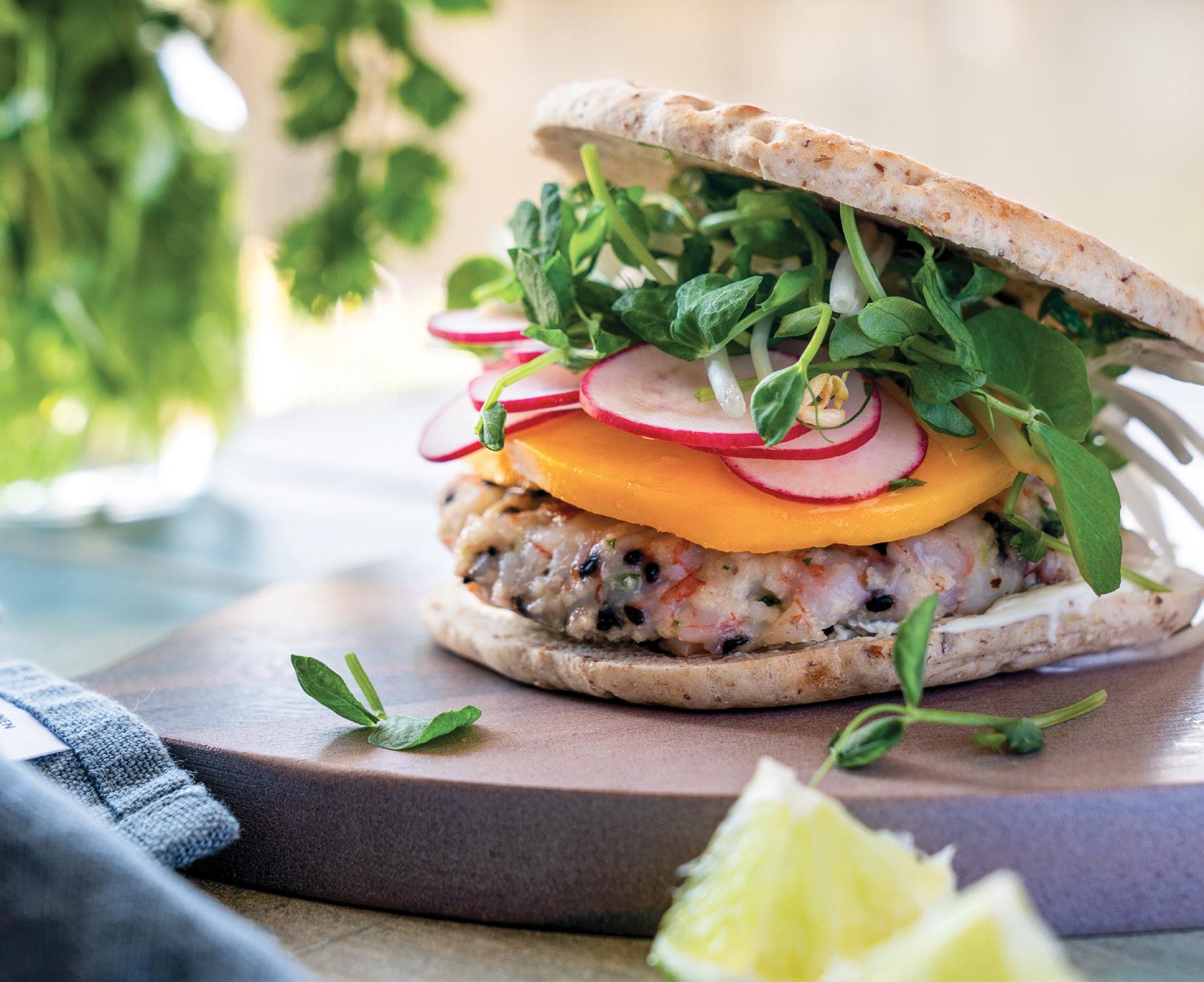
PER SERVING: 192 CAL; 7 G PROTEIN; 8 G FAT; 24 G CARB (3 G SUGARS); 297 MG SODIUM; 3 G FIBER
Next stop Asia! This shrimp burger combines classic Asian flavors with unique toppings for rich umami flavor with the saltiness of the ocean. Whether served on a bun or over rice in a more traditional Asian-style meal, try some unique miso yogurt or a wasabi mayo dressing for a fabulous flavor bomb.
SERVES 4
1 lb raw, peeled, and deveined shrimp
1 garlic clove, peeled and minced or grated
½ tsp peeled and grated gingerroot
1 whole green onion (trimmed) finely diced
1 organic egg white
¼ cup panko crumbs
1 tsp black sesame seeds (optional)
4 radishes, washed, trimmed, and finely sliced
1 Tbsp fresh lime juice
2 cups bean sprouts
1 cup roughly chopped mixed greens/shoots
¼ cup chopped cilantro
1 Tbsp rice wine vinegar
¼ tsp sesame oil
¼ tsp coconut sugar
Ripe mango, peeled and thinly sliced
4 thin multigrain buns, or alternatively serve on rice
Miso yogurt (optional)

1. Into food processor, place ¼ of prepped shrimp and blend until a fine, ground paste. Add remainder of the shrimp, and pulse a few times to dice and combine, scraping down sides of bowl, if necessary. Place shrimp into medium-sized mixing bowl and add garlic, gingerroot, green onion, egg white, panko crumbs, and black sesame seeds, if using. Mix to combine.
2. Divide ground shrimp into 4 portions and, with your hands, form into patties. Refrigerate or freeze for approximately 15 to 30 minutes.
3. While patties are in fridge, use mandolin to thinly slice radishes. Place sliced radishes in small glass bowl and top with lime juice. Let sit for 20 minutes, drain before using.
4. In another small bowl, combine bean sprouts, mixed greens or chopped pea shoots, and cilantro. Toss with rice wine vinegar, sesame oil, and coconut sugar.
5. Over medium heat, panfry patties for 4 minutes on each side, or until pink all the way through. Serve on bun (or rice) and top with pickled radishes, bean sprout slaw, sliced mango, and your choice of condiments or creamy dressing (such as miso mayonnaise for great umami flavor).
PER SERVING: 337 CAL; 34 G PROTEIN; 6 G FAT; 42 G CARB (15 G SUGARS); 442 MG SODIUM; 6 G FIBER
* Fresh is best
Squeeze fresh lemon on patties while cooking to give them the fresh zing of citrus.
Ever thought about making burgers as an appetizer or as a potluck meal for friends and family? Try making your favorite burger into bite-sized portions. They might be small in size, but they won’t be small in flavor. These burgers also pair well with a Greek salad for a delicious midweek lunch or dinner.

SERVES 16
12 ounces lean ground turkey breast
½ cup fresh chopped parsley
¼ cup fresh chopped dill
1 garlic clove, peeled and minced
Zest of half a lemon
1 cup grated zucchini (moisture squeezed out)
2 whole green onions, chopped
1 organic egg
½ tsp dried oregano
2 tsp finely chopped capers (optional)
2 whole wheat pitas, each cut into 8 pieces
1 English cucumber
½ cup tzatziki (optional)
1. In large mixing bowl, add the first ten ingredients and combine until mixed evenly. Form into 16 mini patties. Place in fridge and chill for 20 minutes.
2. In nonstick or lightly oiled pan, over medium-high heat, cook on each side for 2½ minutes or until internal temperature reaches 160ºF.
3. Serve as desired, but these burgers are fun to serve on a toothpick or small skewer with a cucumber slice and pita bread in the form of a burger bite. Serve on a platter with a bowl of tzatziki and lemon wedges.
Mix a combination of nonfat Greek yogurt and mayonnaise (vegan options work great as well) with any of the following to add extra flavor to your burger. The best part? Everyone can customize their own burger just how they like it.
TRY. Enjoy with NatureSweet fair trade Cherubs® or any other NatureSweet tomatoes.

MISO
GOCHUJANG
The options are endless; have some fun playing around in the kitchen and create your very own secret sauce.






These breakfast pops are the perfect way to start a summer day. The surprise addition of homemade granola embedded in the pop takes this from a snack-time treat to a filling breakfast to fuel the day ahead.

SERVES 9
GRANOLA
1 Tbsp melted coconut oil
3 Tbsp maple syrup, divided ½ cup gluten-free, old-fashioned rolled oats
2 Tbsp raw sunflower seeds
2 Tbsp unsweetened shredded coconut
1 Tbsp ground flaxseed
1 Tbsp raw hemp hearts
¼ tsp ground cinnamon
POPSICLES
1¼ cups plain yogurt or nondairy yogurt of choice
¾ cup finely chopped fresh strawberries
¾ cup halved fresh quartered raspberries
1 tsp vanilla extract
1. For granola: In medium-sized frying pan, bring coconut oil and 2 Tbsp maple syrup to a boil over medium heat.
2. Stir in oats, sunflower seeds, shredded coconut, ground flaxseed, hemp hearts, and cinnamon. Cook, stirring often, until granola is toasted, golden brown, and fragrant, about 4 to 6 minutes.
3. Remove frying pan from heat and allow granola to cool to room temperature in pan. Once cooled, granola may be stored in airtight container at room temperature for up to 1 week.
4. For popsicles: In medium bowl, with rubber spatula, fold together yogurt, chopped berries, vanilla, and 1 Tbsp maple syrup.
5. Divide mixture among 9 (3 oz) popsicle molds. Top each popsicle with about 2 Tbsp granola and gently press into yogurt mixture until just submerged. Reserve any remaining granola for another use.
6. Insert popsicle sticks and freeze until solid, at least 4 hours or overnight. Unmold and enjoy. Yogurt pops will keep in freezer for up to 1 week.
PER SERVING: 69 CAL; 3 G PROTEIN; 2 G FAT; 10 G CARB (7 G SUGARS); 27 MG SODIUM; 2 G FIBER
Lawren Moneta is a chef, food stylist, and recipe developer.
The sunny side of these mini-sized egg cakes? They offer up a savory way to work more protein and vegetables into breakfast time. Serve at room temperature or warm in the microwave.

SERVES 9
1 Tbsp grapeseed oil or avocado oil
1 cup diced yellow onion
½ tsp salt, divided
2 cups peeled and grated sweet potato
2 garlic cloves, minced
6 large organic eggs
¼ cup milk or nondairy milk substitute
1 large red bell pepper, seeded and diced
½ cup grated Parmesan or Gruyère cheese
2 tsp fresh thyme
¼ tsp black pepper
1. Preheat oven to 375º F.
2. In large skillet over medium, heat oil. Add onion and ¼ tsp salt; cook for 5 minutes or until softened. Add sweet potato and garlic; heat just until potato is tender, about 2 minutes.
3. In large bowl, whisk together eggs and milk. Stir in red bell pepper, cheese, thyme, remaining ¼ tsp salt, and black pepper. Stir in cooked vegetables.
TO AVOID A STICKY SITUATION
Use a well-greased muffin pan when working with eggs. Or better yet, try a silicone pan that is naturally nonstick and pliable, allowing for easy extraction of egg cakes or a batch of muffins.
4. Divide among 16 minisized greased muffin cups or 6 regular-sized muffin cups. Bake until egg cakes are set, about 15 minutes. Let cool for a couple of minutes before unmolding.
PER SERVING: 223 CAL; 12 G PROTEIN; 10 G FAT; 22 G CARB (6 G SUGARS); 436 MG SODIUM; 3 G FIBER
Matthew Kadey, MSc, RD, is a dietitian, nutrition writer, and recipe developer. He is also the author of Rocket Fuel (VeloPress, 2016) and Muffin Tin Chef (Ulysses Press, 2012).
If you want to make sure these are gluten free, be sure to purchase certified gluten-free oats. Quinoa flakes instead of oats is another easy swap that works well too. Keep in mind, some children can still be sensitive to grains—whether oats or pseudo-grains such as quinoa—if they’re gluten intolerant.

These gluten- and dairy-free bars are a family favorite as either an after-school snack or a healthy and hearty addition to your child’s lunchbox. They can easily be made nut free, but just as delicious, by simply omitting the chopped walnuts

MAKES 8 BARS
1½ cups rolled oats
1 tsp baking powder
1 tsp baking soda
1 tsp ground cinnamon
2 large ripe bananas
¼ cup melted coconut oil
2 to 3 Tbsp maple syrup
½ cup pumpkin seeds or sunflower seeds
½ cup dried cranberries
¼ cup chopped walnuts (optional; omit for nut free)
½ cup mini chocolate chips
1. Preheat oven to 350º F. Grease 8-inch square baking dish or line with parchment paper.
2. In food processor, blitz oats until coarsely ground. (They don’t have to be finely ground. It’s okay if you see some bits.) In large bowl, combine ground oats, baking powder, baking soda, and cinnamon.
3. In small bowl, mash bananas with a fork. Add melted coconut oil and maple syrup. Mix together. Add banana mixture to dry mixture and mix until combined. Fold in seeds, cranberries, walnuts (if using), and chocolate chips. Place mixture in square baking dish and flatten with spatula.
4. Bake for 18 to 20 minutes. Let cool for 10 minutes before removing from the pan. Cut into bars. Keep in fridge for up to 1 week, or freeze for up to 3 months.
PER SERVING: 313 CAL; 8 G PROTEIN; 17 G FAT; 39 G CARB (19G SUGARS); 200 MG SODIUM; 4 G FIBER
Joy McCarthy, RNCP, CNP, is a holistic nutritionist and best-selling author of Joyous Health and Joyous Detox (Penguin Canada, 2014 and 2016).





From a simple seed planted in the ground with a little water, nutrients from the soil, and a whole lot of energy from the sun, comes the wholesome nutrition that sustains our lives.


wholeearthsea.com

Factors Farms are certified 100% organic. Our crops are fertilized with compost and nitrogenrich sea plants, and are meticulously cared for by hand.
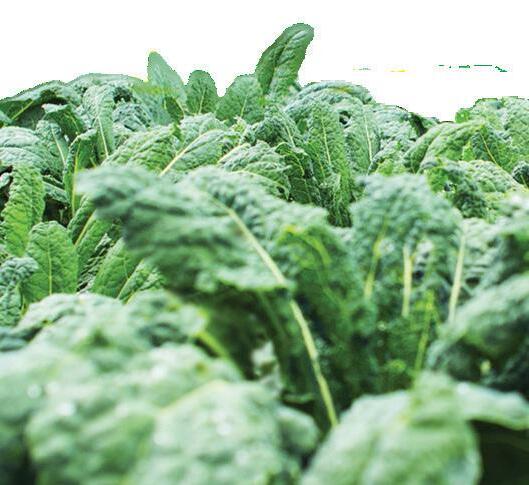

This is the vision that created the greatest multivitamins ever.


WHOLE EARTH & SEA AVAILABLE AT YOUR LOCAL NATURAL HEALTH STORE












It’s important to keep your immune system strong—through flu season and beyond. With some smart everyday diet and lifestyle habits and a few key supplements, you can build up your innate immune system to become a fighting force in the yearly influenza battle. Here’s a look at some natural strategies you can employ to help avoid getting sick.
There is no guaranteed protection from the flu. One reason is simply that it’s not just a single virus. Rather, “the flu” we experience each year can be caused by a number of influenza virus types (A or B) and subtypes, depending upon its particular surface proteins.
That doesn’t mean we can’t rely on our innate immune system for some protection, but we need to keep it healthy so it has a fighting chance. When it comes to supporting your immune system, always remember the fundamentals.
Eating a nutrient-dense diet full of fresh fruit and vegetables, high-quality protein, and whole grains is crucial in providing your immune system with the micro- and macronutrients it needs. Be sure to include fresh herbs, garlic, and onion, which contain beneficial secondary compounds.
Regular exercise keeps your blood oxygenated and your lungs strong. Minimize intake of sugar and alcohol to keep your body from getting run down and vulnerable. Get plenty of sleep and keep stress low. Mindfulness practices including meditation and yoga can help keep the mind calm and the body relaxed.
When we need a little support, we can turn to several supplements that have demonstrated helpful antiviral properties. Maintaining a healthy immune system with a little support may help keep the bugs at bay. And if you do succumb, they may help reduce the severity of symptoms and/or the length of illness. »
Because they function as immune modulators, probiotic supplementation may be a powerful tool against cold tand flu viruses.
Vitamins A and B6 are important for the development and regulation of our innate immune system. Vitamin C is well known as a cold and flu fighter, but it seems to be less effective for prevention than it is for reducing the severity and duration of colds once we get sick.
When it comes to vitamin D, among those who are deficient, supplementation is consistently associated with benefits to immunity. Daily vitamin D supplementation has been shown to reduce incidence of influenza A in schoolchildren.
Did you know that children catch an average of six to 10 colds or flu every year? When your child catches a cold, starting echinacea as soon as symptoms appear provides the best chance for a beneficial effect. The root of Echinacea purpurea may help lessen symptom severity and shorten the duration of illness.
Elderberry
Elderberry (Sambucus nigra) is a favorite folk medicine for its ability to inhibit viral infection. Packed with nutrients including vitamin C, fiber, and antioxidants that are known to help stimulate your immune system and fight inflammation, elderberries have shown positive effects on the length and severity of flu and common cold symptoms. Elderberries are most often consumed as a syrup, but you might also find them in teas, gummies, lozenges, or pills.
Garlic
Garlic contains allicin, which has been shown to kill viruses including rhinovirus and parainfluenza virus. A randomized trial of 120 adults found that aged garlic extract increased T-lymphocytes and NK cells (important immune system fighters) and reduced the severity and duration of cold and flu symptoms.
• Wash your hands frequently, for at least 20 seconds.
• Don’t touch your face, particularly your eyes, nose, and mouth.
• Keep common household surfaces disinfected.
• Stay home if you feel sick and wear a mask if you must go out.
• Put at least six feet between you and anyone that seems sick.
• Always use your elbow or a tissue if you have to cough or sneeze, and face away from others.
• Keep your immune system strong so you’re always ready!
Our lives have only become busier in recent decades, and getting a good night’s sleep has become a luxury for a lot of us. Rather than being a luxury, though, developing good sleep hygiene is as essential for maintaining a healthy immune system as getting your regular workout—both are key to keeping the sniffles at bay.
Glutathione, considered to be the master antioxidant, is responsible for cellular health throughout the body, DNA synthesis and repair, and support in fine-tuning the innate immune response to infection. Glutathione can be taken as a supplement but is typically expensive. Alternatively, N-acetylcysteine (NAC), a precursor to glutathione in the body, is considered a more affordable option.
Because they function as immune modulators, probiotic supplementation may be a powerful tool against cold and flu viruses. A 2015 Cochrane meta-analysis that evaluated 12 research studies involving 3,720 participants, including children, showed better results in several areas for supplementation with probiotics over placebo, including reducing the number who experienced acute upper respiratory tract infection as well as their average duration and cold-related school absences.
This mineral may be one of the most widely studied for its antiviral effects. It can improve the antiviral response (ability of the innate immune system to resist a virus), inhibit viral replication (slowing down the ability of the virus to grow new versions of itself during the infection process), and reduce related symptoms (sneezing, coughing, fever). Zinc lozenges seem to be particularly effective.
Paula Blanchet is a registered holistic nutritionist at interplaynutrition.com.
 BY LIVE NATURALLY
BY LIVE NATURALLY
Do your children love fish? If they do, and they eat fish regularly, they’re probably getting enough of an important nutrient—omega-3s. But if they don’t, it’s important to know why they should and how you can make that happen. Omega-3 fatty acids are a powerful and essential component of healthy development in children.
Omega-3 fatty acids are one of the two major classes of polyunsaturated fatty acids, or PUFAs. Omega-3s exist in many different forms, but most of the research is focused on:
• ALA—alpha-linolenic acid—found in plant oils such as flaxseed, soybean, and canola.
• EPA—eicosapentaenoic acid—in fish and their oils as well as krill oils.
• DHA—docosahexaenoic acid—also present in fish and krill oils.
Our bodies produce limited amounts of EPA and DHA; these are considered essential fatty acids (EFAs). The most practical method of obtaining EFAs is directly through our diets and/or dietary supplements.
Omega-3s provide many benefits to both children and adults. They provide our bodies with energy and support healthy cardiovascular, pulmonary, immune, and endocrine function. DHA, in particular, is found in abundance in our brains and retinas. These healthy fats are particularly important for development both in the womb and throughout childhood. EPA and DHA are thought to help promote healthy mood balance and support the growth of the brain, eyes, and nerves of children up to 12 years of age.
The main source of the omega-3 fatty acids DHA and EPA are fish oils. Algaesourced DHA is now available as well, for those who prefer to avoid fish. Supplemental omega-3 fatty acids are available in your local health food store as capsules, chewable soft gels, or bottled liquids. The liquid forms are now often available in combination with vitamin D3.
In the search for natural interventions in the treatment of ADHD, much interest has been focused on the use of essential fatty acids (EFAs). Of most interest have been docosahexaenoic acid (DHA) and eicosapentaenoic acid (EPA).
After discovering, through research, that many of those diagnosed with ADHD also had deficiencies and imbalances of EFAs during their developmental years, researchers turned to the role of EFA supplementation in treating symptoms of ADHD.
A large, multifaceted systematic review of the effect of EFA supplementation on ADHD symptoms was published in late 2017. The review investigated the outcomes of 25 randomized, controlled trials examining the effect of combined EPA and DHA supplementation. They discovered that those trials that included a longer trial period found the best outcomes in ADHD symptom improvement.
When it comes to training—and nurturing—your noodle, a number of apps would appear to have you covered. Read on to find out what studies and experts approve of the latest in brain and mental health trends. Plus a few natural supplements to boost your brain health, too.

Good news: the progress you’re making on your brain-training app is not just in your head. One 2019 study discovered that playing an app called Decoder for eight hours over a one-month period improved participants’ ability to concentrate.
However, another study says even though many brain-training apps often work, there is one caveat: a particular app may work for one type of brain training, but that doesn’t mean it necessarily transfers to another task.
Mindfulness apps can decrease stress— especially those that help users cultivate acceptance or “learning how to be open and accepting of the way things are in each moment.”
Kimberlee Mancina, registered psychotherapist and founder of Nourished Mind Psychotherapy based in Toronto, Canada, uses apps in her practice, believing them to be “valuable complementary tools for traditional therapeutic interventions.
“They can act as a starting point, are much more accessible—financially, they’re more affordable —and can add therapeutic support,” explains Mancina. She adds that those with anxiety or agoraphobia may find them particularly useful.
Along with several natural supplements, a growing number of apps can support and boost your mental health.
BY CARIMÉ LANENATURAL
There are also several natural supplements to boost brain function.
Curcumin
Research published in the American Journal of Geriatric Psychiatry indicates that ingesting an easily absorbed curcumin supplement can help with brain power; in particular, it may improve memory and attention abilities significantly.
Rosemary aromatherapy
Recent research indicates that inhaling a compound in rosemary—namely 1,8-cineole—is significantly related to better performance on cognitive tasks, and breathing in higher concentrations of the herb leads to even better performance.
Bacopa monnieri
Used in Ayurvedic medicine since 500 AD to treat anxiety and improve cognitive processes, memory, and recall, one recent study found that a daily 300 mg extract had a significant effect on some components of memory.
There’s no shortage of apps out there to help you with your mental health. So, we had registered psychotherapist Kimberlee Mancina share her recommendations:
MoodKit: Mancina finds this app works well for tracking mood on a weekly basis.

Calm & Headspace: Mancina loves these apps for their tools to aid in guided meditation for stress reduction, anxiety, and sleep.


Talkspace: This app is helpful for connecting with therapists, especially since it can be intimidating to find a therapist for the first time.

YouTube: This app is an extensive resource for sound healing, guided meditation, and emotional freedom techniques.

Because the molecular composition of quercetin affects its ability to enter the bloodstream, then your cells.
This may sound complicated, however, after two years of development and human clinical studies in Canada, Quercetin LipoMicel Matrix was developed.
LipoMicel is the ideal carrier to deliver quercetin to your cells. Study after study shows up to 10 times higher absorption.
Compared to other quercetin products, only Quercetin LipoMicel has shown to provide the highest absorption of quercetin in clinical trials conducted in Canada.

One Quercetin LipoMicel Matrix softgel is equivalent to 2,500 mg of standard quercetin.







The unique antioxidant effect of quercetin supports healthy blood vessels by reducing the oxidative damage to vessel walls. Such support even extends to the capillaries, which supply nutrients and oxygen to every cell in the body.
Based on study results published in a peer-reviewed Canadian journal*, the LipoMicel formulation achieves significantly higher blood concentrations of quercetin and provides up to 10 times higher absorption than regular quercetin. Quercetin LipoMicel represents an efficient delivery system for enhancing the absorption of quercetin in the body, and thus promotes its wide-ranging health benefits. To date, the low-absorption rate of quercetin in the body has been one of the greatest challenges to overcome. For this reason, Quercetin LipoMicel has been designed to improve the uptake of quercetin and boost its therapeutic potential.
*(2021). Quercetin LipoMicel—A Novel Delivery System to Enhance Bioavailability of Quercetin. Journal of Natural Health Product Research, 3(2), 1-8. jnhppublications.com
NUUN Hydration Immunity

OLLY Kids Immunity

NATURE’S WAY SystemWell Ultimate Immunity

GARDEN OF LIFE Memory & Focus
NATURE’S WAY Clear Thinking
AMAZING GRASS Organic Brain Booster

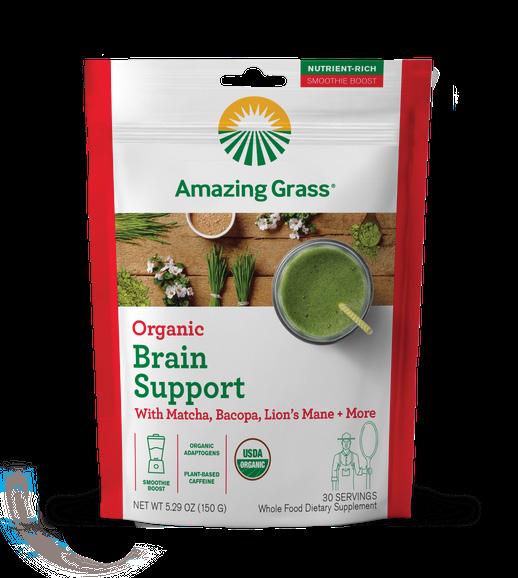
SOURCE NATURALS Wellness Formula

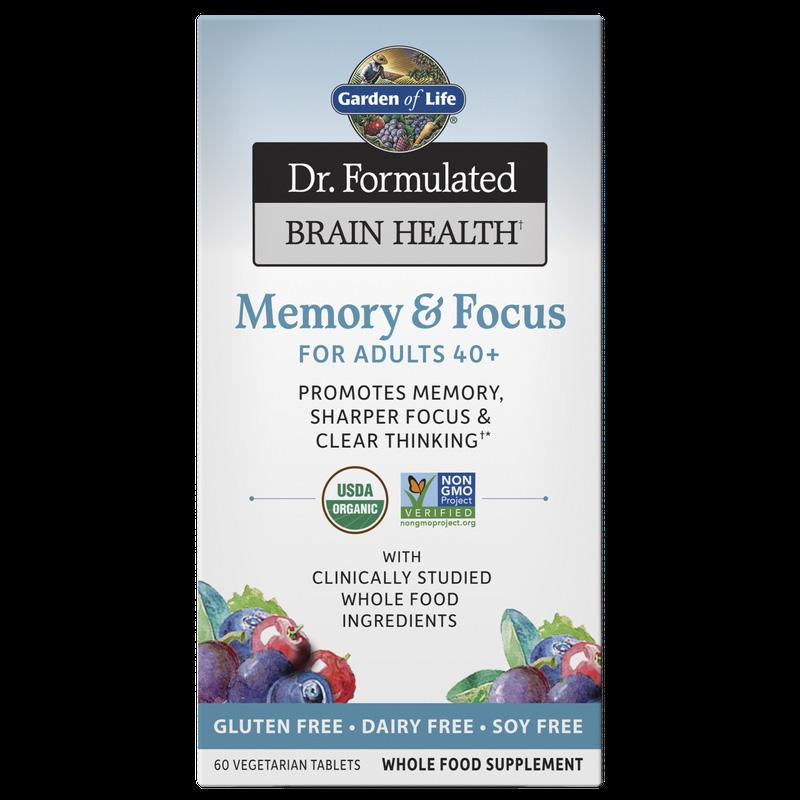
GAIA HERBS Everyday Immune

SCAN HERE TO ORDER THESE NATURAL SUPPLEMENTS ONLINE! Vitacost.com is your source for natural, organic vitamins and supplements.

NATURE’S WAY Mood Lift

